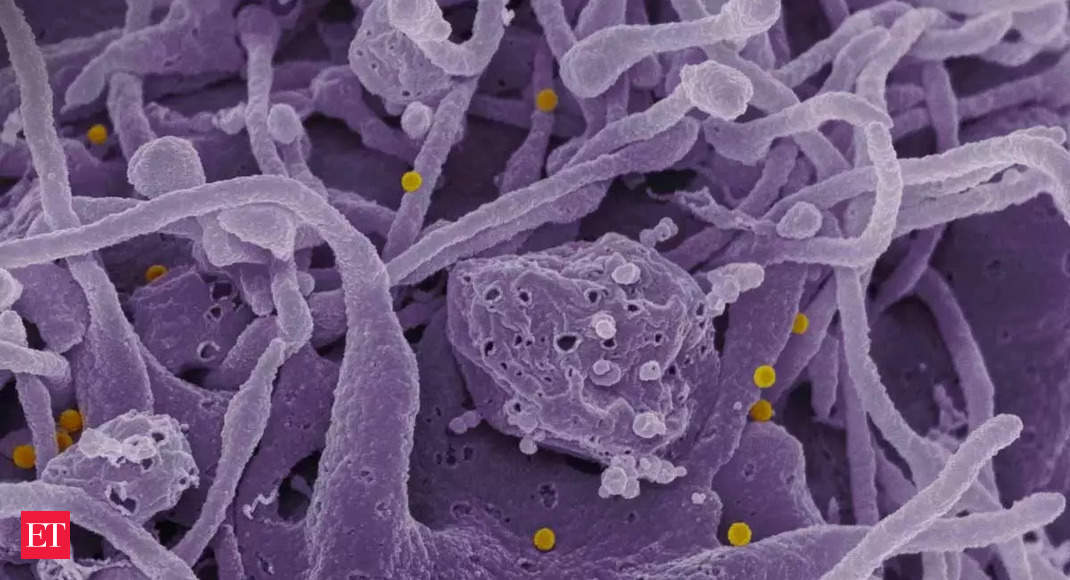The Crimean-Congo hemorrhagic fever (CCHF) virus, which poses a significant public health risk, is spreading across Europe, Africa, and the Middle East, with concerns of its potential impact being exacerbated by climate change. CCHF is primarily transmitted by ticks and carries a fatality rate ranging from 10 to 40 percent. Instances of CCHF have already been reported in Spain and Pakistan, raising concerns about the possibility of its emergence in the United Kingdom.
James Wood, head of veterinary medicine at Cambridge University, notes that CCHF could eventually make its way to the UK due to the presence of ticks, as the disease is expanding beyond its typical regions and progressing toward countries like Britain and France as a result of climate change.
To address the urgency of the situation, the government has issued a crucial health advisory regarding CCHF, urging individuals to take preventive measures against ticks. These precautions include wearing appropriate clothing, such as long sleeves and trousers, when in tick-inhabited areas, as well as conducting thorough tick checks after outdoor activities.
Crimean-Congo hemorrhagic fever (CCHF) is an alarming disease caused by a tick-borne virus. It was initially identified in Crimea in 1944 and has since spread to various regions worldwide, including Eastern Europe, Africa, and the Middle East. Common indicators of CCHF include fever, headaches, muscle pain, and bleeding. While there is currently no specific treatment available, timely diagnosis and intervention can enhance the likelihood of survival.
The World Health Organization (WHO) has reported that outbreaks of severe viral hemorrhagic fever are caused by the CCHF virus, which has a case fatality rate ranging from 10 to 40 percent. CCHF is prevalent in Africa, the Balkans, the Middle East, and countries in Asia below the 50th parallel north, which marks the geographic boundary of the primary tick carrier.
Symptoms of CCHF may include sudden onset of fever, headache, back pain, joint pain, stomach pain, vomiting, red eyes, flushed face, red throat, and petechiae (red spots) on the palate. Additional symptoms may include jaundice and changes in mood and sensory perception in severe cases. The illness progresses with the appearance of large areas of severe bruising, severe nosebleeds, and uncontrolled bleeding at injection sites. These symptoms typically manifest around the fourth day of illness and persist for approximately two weeks. Fatality rates in hospitalized patients during documented CCHF outbreaks range from 9% to as high as 50%. Although the long-term effects and specific complications of CCHF infection in survivors are poorly studied, recovery is generally slow.
Supportive care is the mainstay of treatment for CCHF and involves meticulous monitoring of fluid balance, addressing electrolyte imbalances, ensuring proper oxygenation and hemodynamic support, and administering appropriate treatment for secondary infections. In vitro studies have shown that the CCHF virus is sensitive to the antiviral drug ribavirin, which has been utilized in the treatment of CCHF patients and reportedly demonstrated some positive effects.
Occupations at risk of exposure to CCHF include animal herders, livestock workers, and slaughterhouse workers in endemic areas. Healthcare workers are particularly vulnerable to infection through unprotected contact with infectious blood and body fluids in endemic areas. Individuals with contact with livestock in endemic regions, including international travelers visiting these areas, are also at risk of exposure.
Preventive measures for CCHF include the use of insect repellent, especially for agricultural workers and individuals working with animals. Insect repellents containing DEET (N, N-diethyl-m-toluamide) are the most effective in repelling ticks. Protective clothing, such as gloves and other appropriate attire, should be worn to minimize exposure to ticks and potential infection. Individuals should avoid contact with the blood and body fluids of livestock or humans showing symptoms of CCHF. Healthcare workers should strictly adhere to proper infection control measures to prevent occupational exposure.
While an inactivated vaccine against CCHF exists and is used on a limited scale in Eastern Europe, there is currently no safe and effective vaccine available for human use. Further research is necessary to develop potential vaccines and evaluate the effectiveness of treatment options such as ribavirin and other antiviral drugs.
In conclusion, the spread of the Crimean-Congo hemorrhagic fever (CCHF) virus across Europe, Africa, and the Middle East is a significant public health concern. The presence of ticks and the effects of climate change contribute to the potential emergence of CCHF in new regions, including the United Kingdom. It is crucial for individuals to be aware of the symptoms of CCHF, take preventive measures against ticks, and seek timely medical intervention if necessary. By implementing appropriate precautions and promoting further research and vaccine development, we can mitigate the impact of CCHF and protect public health.





